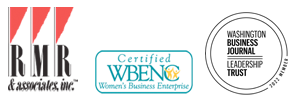
How to nail your next media interview and achieve maximum business benefits
By Robyn Sachs, President & CEO of RMR & Associates, Inc.
It’s time to harness the power of the media and make it work for you. The fact is, the media plays an important role in your business’ growth and long-term success. While interacting with reporters and editors may sometimes be intimidating, your best offense is a strong defense. That’s why you have to ensure that you and members of your staff who speak on behalf of your company are properly media trained.
A positive relationship with the media pays off
Effective media relations allow you to establish yourself and your company as a credible source. The media also acts as a powerful conduit to enable you to reach your target audiences and speak to timely issues, which shows that you are actively engaged in the current dialogue. Interviews are opportunities that allow you to:
- Define and clarify.
- Promote and protect.
- Bring your issue to life.
Most importantly, in preparing for your media interview, it is critical to remember that the reporter wants a good story — and they are talking to you because they feel confident you will give it to them. However, the interview isn’t just an opportunity for them to get their story. It’s also a chance for you to make sure you communicate yours — which is easily done if you focus on finding the common ground between the two and make sure the story you tell is your own. Define your objective, and have your own agenda. Drive your messages and use bridging techniques often to deliver a cohesive, clear message that is uncluttered with jargon or judgmental language.
Think like a reporter, and stay on message
The biggest secret to a strong media interview is staying on message, no matter what. Here are some tried-and-true tips to making sure you go into your next interview strong:
- Do your homework. Before the interview even begins, look up the reporter you’ll be speaking with, their background and recent stories they’ve published.
- Establish your plan, and stick to it. Set a time limit for the interview, and identify your “no-go” topics. Make sure you have the necessary background.
- Stick to three messages, max. Limiting your messages helps you stay on track and maintain a clear, strong approach to communicating them. Make sure each of your messages is backed up with facts where they apply, as well as any third-party validation, quotable language or lively anecdotes to make the interview even more memorable.
- Anticipate tough questions, and be ready. It’s a reporter’s job to do what is necessary to get the best story out of their source. Your job in an interview situation is to tell your story the best way you can and in a manner that ensures both you and your company emerge in a favorable light. Keep your cool, avoid the negative and counter misconceptions with facts.
- Use bridging techniques often. Bridging is a key element to enabling you to stay on message, no matter what an interview throws at you. You prevent the interview from becoming an interrogation and keep control of driving your messages by using them as responses to questions you are asked.
Embrace the video interview
Recent circumstances have triggered a sharp rise in the use of videoconferencing technology. As such, platforms such as Zoom and Skype have replaced the typical in-person interview. The key rules above still apply, although there are some other tricks of the trade to ensure your video interview style is on point.
- Maintain a conversational style. While in-person interviews may seem more relaxed and off the cuff, it can be easy to build up a video interaction into a quest for perfection. Make sure you keep it light and conversational (just like you would if the reporter was physically in front of you), and resist the urge to sound scripted in any way.
- Look straight ahead into the lens. Eye contact is critical, hands down. Keep your eyes on the lens of your phone or computer camera the entire interview, and try to minimize looking down at your notes or looking off to the side, which can make you look distracted. A simple phone tripod can also work wonders in making it easy to have a steady place to look.
- Be conscious of your filming location. Video interviews require additional focus on your placement to ensure optimal lighting on your face without ominous shadows. Natural lighting from windows is always best.
Above all, be confident (and stay on message)
Keeping the above tips in mind when preparing for your next media interview will ensure you’re armed to tackle it confidently and remain in control of your message while doing so. Boost your business growth and get in front of your target audiences by harnessing the power of the media and making it work for you and your company.
To read more of Robyn’s articles for the Washington Business Journal Leadership Trust: https://www.bizjournals.com/washington/news/leadership-trust/robyn-sachs
